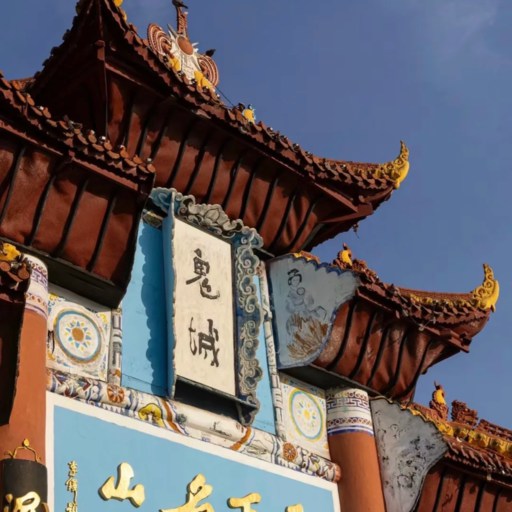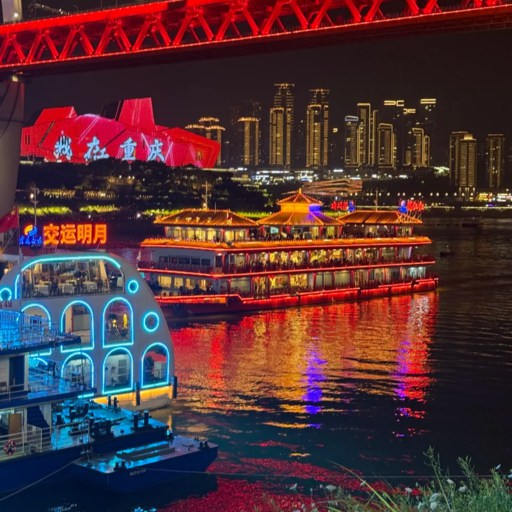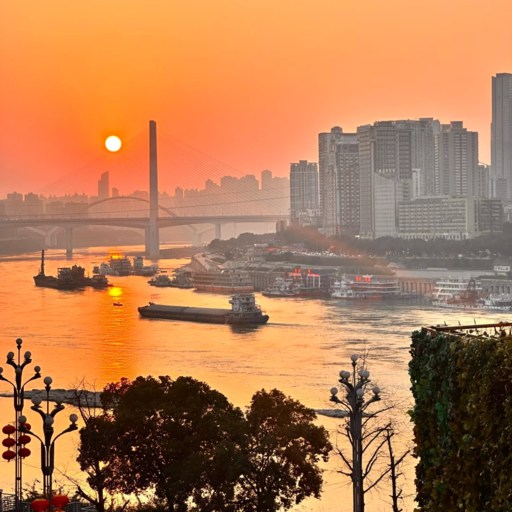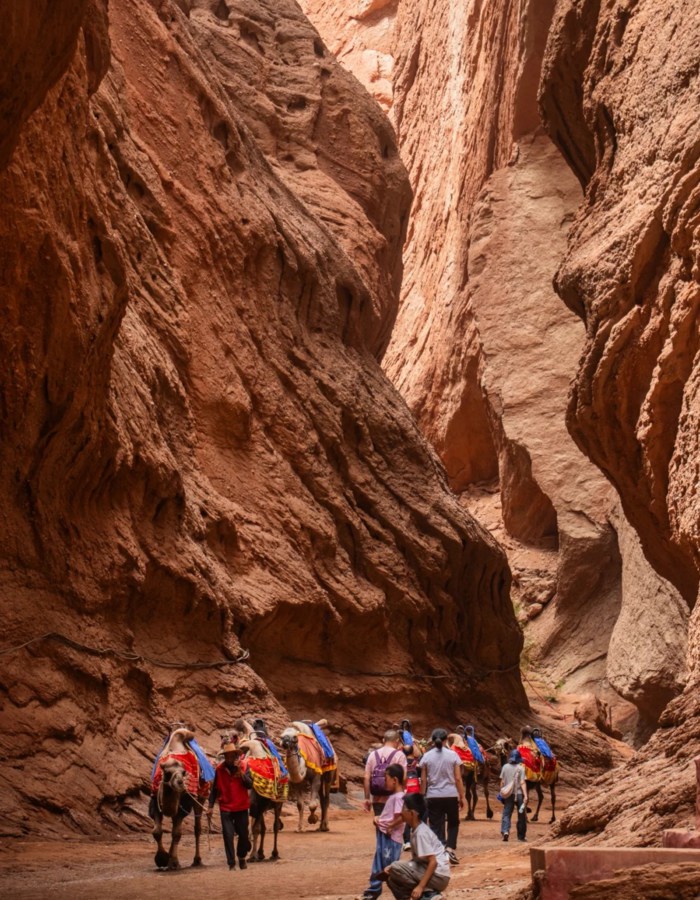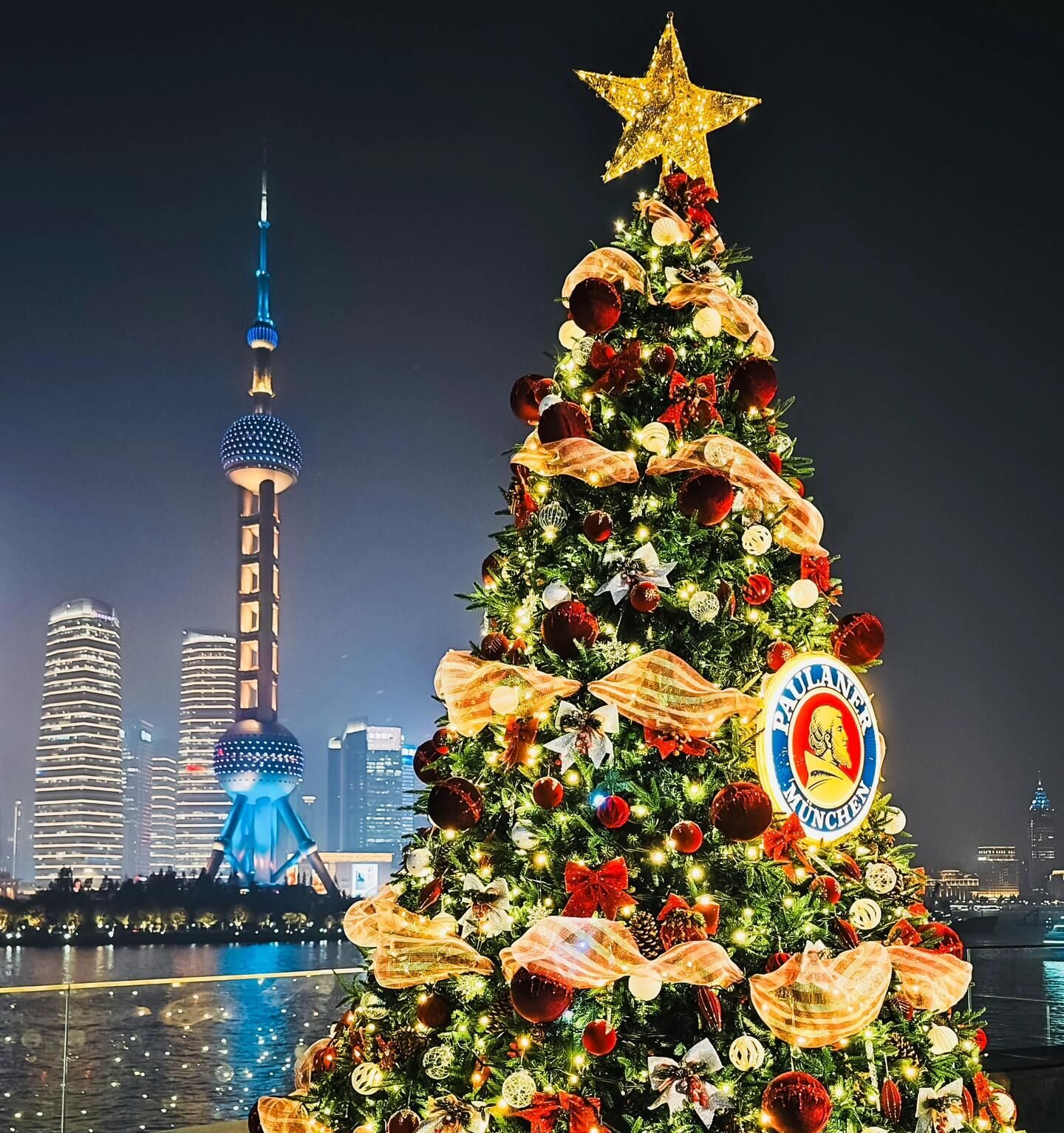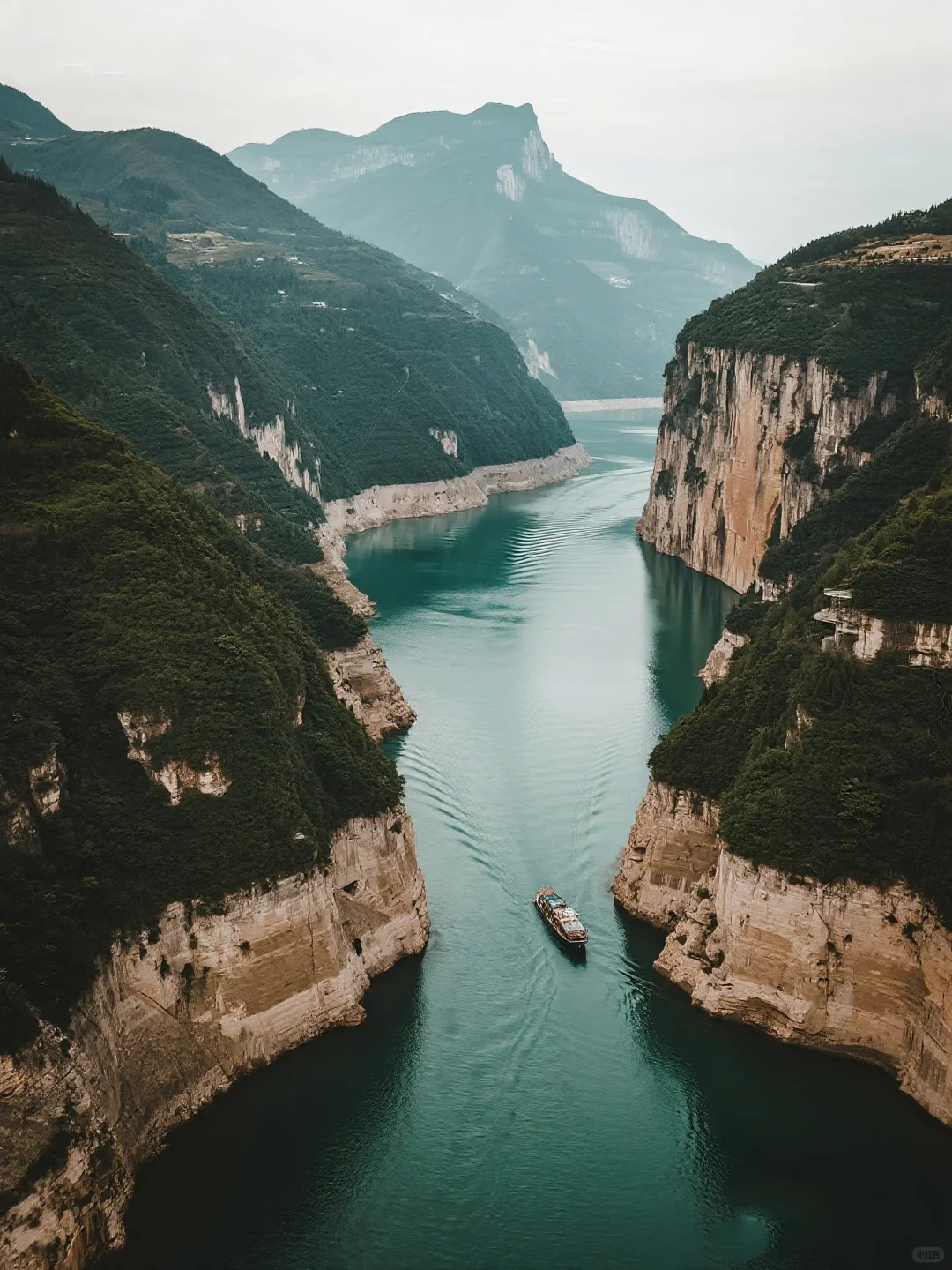
Yangtze River
The Yangtze River isn’t just a line on a map stretching across half of China—it’s a living timeline in motion. It begins high in the cold, thin air of Qinghai, where yaks outnumber people, then curves through Yunnan’s tea hills, Chongqing’s cliffs, and the smoky plains of Hubei before reaching the East China Sea near Shanghai. The river runs about 3,900 miles, and that number means little until you stand beside it, watching barges crawl by like ants. Each bend feels like another country—temples, factories, glowing cities, and rice paddies—all connected by this one restless current that somehow keeps China breathing in rhythm.
Quick Facts About the Yangtze River
| Chinese Name | 长江 (Chang Jiang) |
| Length | 6,300 km (3,917 miles) |
| Source | Tanggula Mountains, Qinghai-Tibet Plateau |
| Mouth | East China Sea near Shanghai |
| Best Travel Season | April–October |
| Major Cities Along | Chongqing, Wuhan, Nanjing, Shanghai |
| UNESCO Sites Along the River | Three Gorges, Mount Emei, Dazu Rock Carvings |
What Makes the Yangtze River So Famous?
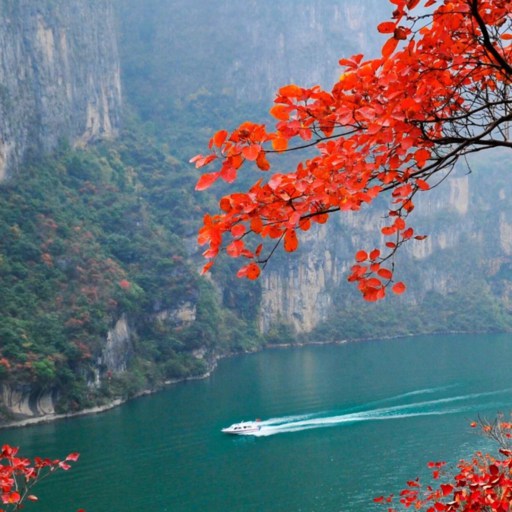
Scene of Yangtze River
A River That Built Civilizations
The Chinese guides I know all say the same thing: you don’t just see China, you feel it aging beneath your feet. Standing on the banks of the Yangtze River, you begin to understand what they mean. This isn’t just a river—it’s memory flowing in motion. Dynasties once grew rice here, traded silk, and built cities that never really stopped expanding. Between Chongqing’s smoky skyline and Yichang’s soft bends, you can almost hear echoes of the kingdoms that once lived on its waters.
Guides remind visitors that the Yangtze River in Chinese means “Long River,” and it lives up to the name. It nourished the fields that became China’s rice bowl, carried boatmen through the fog of the Three Gorges, and bore poets and merchants toward ancient Nanjing. TripAdvisor reviewers often call it a “living museum,” which sounds cheesy until you see it yourself—a Tang-style pagoda rising beside a power plant, both reflected in the same brown current. Time stacks here like the cliffs along the cruise route—worn, fractured, and somehow still standing strong.
From Myths to Modern Industry
It is weird that the Yangtze River could contain poetry and machines at the same time. The sadness and strength of it were sung long ago by poets such as Qu Yuan, his Li Sao remains fresh when you read it when you are by the riverbanks in Hunan, the air all damp and diesel-filled. Those lines on faithfulness and exile do not simply belong to history but they cling to the fog which hangs above the current.
It is that current that runs turbines now. The Three Gorges Dam is a giant and controversial project, which rumbles day and night, generating electricity to millions of people. You can feel it vibrating when you are near, low, slow, as the heart of a sleeping giant beats. In the mean time, Yangtze River shipping lines transport all sorts of automobile, grain, Smartphones, and their horns resonate off cliffs on which fishermen once sang their sea shanties. The opposition between them is wild: on one side of the river there is the smell of fried noodles and engine oil, and on the other side, there is still lotus growing in the mud. Here the old and the new are arguing and yet somehow both manage to hang together.
The Sound, Smell, and Feel of the River
There is no morning on the Yangtze River when there is no noise. The fog descends off the hills enveloping the decks in a cool damp coating. A ferry horn breaks the mist somewhere, and you smell the damp ground with it and diesel and instant coffee that the cabin kiosk sells. At one of the little ferry stations, a ferryman is rowing in a skiff of wood--slow strokes, regular as though he is in an old rut.
Nor is the water in itself pretty, not so much; it is brown and agitated, like molten soil. However, on sunshine days, it turns gold a minute, and then you have it, and this is not a river the person visits to see, this is a river to experience.
Cruising the Yangtze River — Magic and Mistakes to Avoid
- Fengdu Ghost City Entrance
- Cruise Ships on the Yangtze River
The Golden Route (Chongqing to Yichang)
Most travelers begin their Yangtze River cruise in Chongqing, a mountain city where neon lights dissolve into drifting mist. The classic four-day route to Yichang passes through the famous Three Gorges—Qutang, Wu, and Xiling—and ends near the towering Three Gorges Dam. It’s the route you see on postcards, and honestly, it earns that praise. The scenery shifts every few hours: limestone cliffs squeeze the river into ribbons, fishermen’s huts cling like bird nests, and bamboo-shaded villages fade in and out of the fog.
Cabins range from plain bunks to balcony rooms, depending on budget. Expect to spend about ¥2,000–3,500 for a mid-range cruise, meals included. You can sip cheap beer while the ship slides beneath hanging bridges shaped like spiderwebs or step onto the deck when the fog clears for twenty glowing minutes. I studied the Yangtze River map, but it couldn’t prepare me for how alive it felt—the water pulsing under the hull, the engines vibrating through my shoes. One tributary, Shennong Stream, shows up on nearly every itinerary. Local boatmen row through narrow canyons, their voices echoing from cliff to cliff. It gets crowded sometimes, but every splash, song, and echo makes the ride worth it.
Offbeat Detours Worth Taking
If you have an extra day or simply hate crowds, several lesser-known spots can completely change your Yangtze River experience. Fengdu Ghost City, sitting on the north bank, feels half Taoist temple and half horror film set—stone demons, judgment gates, and incense so thick it clings to your clothes. It’s kitschy at moments, but you leave with that strange reverence Chinese culture holds for both life and death.
Another hidden gem lies in the Lesser Three Gorges near Wushan. Boats here are smaller and feel more personal. The cliffs lean so close that if you stretch your arm, you could touch the moss. I remember reading a TripAdvisor review calling it “crowded but worth it,” and that line fits perfectly. These places remind you the Yangtze River location isn’t just geography—it’s theater. In one turn, the sacred becomes surreal, and the river’s rhythm shifts again.
Common Cruise Traps (and How to Dodge Them)
All that is organized in a Yangtze River cruise goes smooth. Other ships will claim to be five stars luxury and the carpets speak otherwise. Some of the operators add on silent charges or compulsory tips of 150200 Yen, which are magically added on check-out. Check first, in boarding--do, pray, check--you save yourself the embarrassment of the front desk afterwards.
Timing usually burns the photography lovers. May and June are mostly obscured by rain and mist, so in that case you were on the dramatic shots of cliffs. Gone. Wait until autumn if you can. And avoid the late-night cultural shows unless you love karaoke in glittering costumes they are good once only. The biggest tip? Take snacks and small money to go on shore. The grilled fish and rice wine are sold by vendors in the villages at a low cost and half the amusement is in haggling over a couple of yuan.
Nevertheless, despite the scams and storms every now and then, the Yangtze River cruise is one of these journeys that remain. You will still recall the effect of the horn reverberating across the gorge even after you stop remembering how much you paid to have Wi-Fi. If you want to understand how to act politely when bargaining with locals or talking to your tour guide, you might like this short guide.
Ecological Reality — The Yangtze River Isn’t Always Pretty
- Maple Leaves by the Yangtze River
- Dusk Time of Yangtze River
Pollution and Preservation Efforts
Honestly, the Yangtze River is not always as clear as the brochure photos show. In parts near Wuhan or Nanjing, the surface shines with oily rainbows that whisper industry never sleeps. Decades of abrupt growth have left their mark, and talk about Yangtze River pollution isn’t far-fetched. Factories once lined its banks and dumped waste straight into the current, while plastic debris drifted downstream toward Shanghai. I remember reading local news in 2024: the Ministry of Ecology and Environment said the upper and middle reaches had improved to Class IV—non-drinkable, but not dead yet.
In recent years, cleanup work finally turned from slogans into action. The ten-year fishing ban that began in 2021 now covers the entire mainstream, giving the ecosystem a rare pause. Fishermen who once lived off the river now earn by patrolling it instead, a strange twist, but it seems to work. Wetland parks keep expanding around Chongqing and Yueyang, and new migratory birds appear each season, adding life back to quiet banks.
Cruising past these sections, you can see green reeds reclaiming muddy shores that once looked empty. The air still carries a faint industrial scent, but hints of fresh grass mix in. Small proof that the pollution story of the Yangtze River isn’t pure despair. It’s slow, gritty progress—the kind that rarely makes headlines but quietly changes the color of the water, one season at a time.
The Fate of the Finless Porpoise
Then there is the Yangtze River porpoise-the smiling angel of China. You may be luckier than that and see one come surging off Wuhan or the Dongting Lake region, a brief gray glimpse and then vanished. According to locals, you can distinguish it with a dolphin because of its head and permanent smile. It is a happy mask that covers an ugly truth, there are fewer than 1,000 in the wild, as the 2024 field survey by the Chinese Academy of Sciences reveals. Whenever I say this to the travelers someone sighs, How can something this cute be disappearing?
Their habitat is pressurized by pollution, ship traffic and dam building. The happy side is that on small breeding grounds around Anqing and Tongling they are bearing fruit--baby porpoises are being reintroduced out of semi-wild enclosures. One of the most recent Yangtze River cruises, one of the passengers beside me screamed when two were surfaced at the same time; she then posted it in TripAdvisor that the river has smiled back at her. That is what the Yangtze River porpoise is, weak evidence that despite the centuries of human noise, the river can still breathe, only inhaling a little, demanding a little quiet.
Beyond the Water — Life Along the Yangtze River
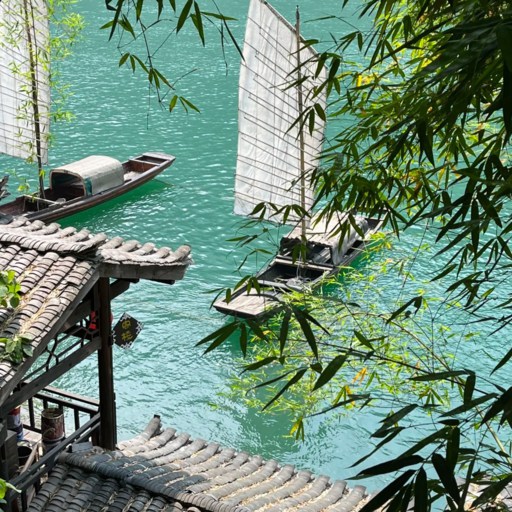
Life Along the Yangtze River
Riverside Cities & Local Cultures
The bends of the Yangtze River each carry a new accent and rhythm. In Wuhan, mornings start with sesame oil drifting from street vendors as locals slurp hot dry noodles. Ferries whistle through the fog, horns echoing between bridges. Nanjing moves slower; you sit by the river at sunset, and the whole city turns copper. Bridges glow, and barges slide along the current without a sound, like passing shadows. Then comes Chongqing, a wild jumble of neon stacked on cliffs, where the river curves like a dragon’s spine. When you stand at Chaotianmen Dock at night, you watch orange and blue reflections tremble together across the water.
All these cities connect through the Yangtze River location—from spicy inland kitchens to coastal jazz bars in Shanghai. Travelers say it feels like crossing half a dozen nations in one journey. Each city tastes, smells, and sounds entirely different, yet they all share the same restless river pushing east, never stopping, always breathing.
Faith, Temples, and Legends
Faith clings to the Yangtze like fog. High above Leshan, temples scatter across Mount Emei—locals call it Anlin-Monas, a blend of English signs and habit. The air still smells of sandalwood, and monks move softly through yards filled with incense smoke. Downriver, shamans whisper old tales—the White Snake legend near West Lake in Hangchow, and the story of Goddess Peak near the Three Gorges, where fishermen swear they see a woman’s outline glowing in the cliffs when sunlight breaks through rain.
A boat guide in Yichang once told me that his grandmother tied small red ribbons on the rails before each trip, “so the dragon spirits would know you meant peace.” It sounded half superstitious, half sincere. Maybe that’s why the temples never feel out of place here. They rise from cliffs and watch thousands of boats slide past on the current. The Yangtze carries myths the way it carries silt—quietly, endlessly, always changing shape but never disappearing.
From the Deck to the Street Market
When you finally leave the ship, charm begins on shore. The dock markets hum with chatter—children pursuing balloons that have ballooned heavenward, vendors blowing up smoke from charcoal fires. You will probably be sucked into tasting something, maybe river fish grilled in chili or tea filtered from teapots way in the air. Prices? You can argue about them. Once, I paid ¥30 for a home-made bamboo fan after the trader had died with laughter at my first offer. That is half the fun of it. The Yangtze River is not merely picturesqueness from the decks—it is the laughter, the haggling, and the odour of roasted garlic that you take away with you and feel for long after you have left.
FAQ About the Yangtze River
Q: Is the Yangtze the same as the Yellow River?
Nope, they’re two totally different rivers. The Yangtze flows through southern China and empties into the East China Sea near Shanghai, while the Yellow flows through the north and empties into the Bohai Sea. The Yangtze is longer and wetter and greener—the joke around here is that the Yangtze feeds rice and the Yellow feeds wheat.
Q: Is the Yangtze River clean today?
Cleaner than it used to be, but not exactly crystal clear. The Yangtze, since the inception of the 10-year old fishing ban and new water rules, is much improved. There is still pollution around some cities, Wuhan and Nanjing for instance, but the upper reaches, around Chongqing and Yunnan, look much better. “The river’s learning to breathe again,” is the local expression.
Q: Where does the Yangtze River begin and end?
The Yangtze begins way up in the Tanggula mountains in Qinghai Province, where glaciers supply her first trickles of water. From there it winds its way through 11 provinces on its way to the East China Sea near Shanghai. This journey—about 6,300 kilometers long, takes it from yak pastures to neon harbors, and is descriptive of nearly every mood of China, in between.
Q: How long is the Yangtze River?
The Yangtze River measures, officially, about 6,300 kilometers (about 3,917 miles) long, making it the longest river in Asia and the third longest river in the world. Its size can perhaps best be appreciated during the four-days journey between Chongqing and Yichang, covering less than one-tenth of its total length, but feeling infinite.
Q: What animals live in the Yangtze River?
The Yangtze River habitat consists of hundreds of species of animals, including sturgeon, porpoises, carp, and migratory birds. The baiji or Yangtze dolphin is now extinct, but the Yangtze porpoise can be found alive and well in the protected areas. If you are quite patient and fortunate, they may be observed near Dongting or Poyang Lakes as a gray back breaking the water.
Q: What is the best time to go on a cruise on the Yangtze River?
Spring (April-May) and fall (September and October) are the best seasons for a cruise on the Yangtze. Temperatures are 20 degrees Celsius (68 degrees Fahrenheit), the water is calm, and the hillsides are green or golden. Avoid July and August unless you like cold rains and humid air. Early November may find the cruise enjoyable, it may be cheap, and it at least has its mistiness.
Q: How is “Yangtze” properly pronounced?
It is pronounced about as follows: “YANG-tzuh,” giving the last syllable a soft “uh.” The natives call it Chang Jiang (长江), meaning “Long River.” The name Yangtze River is derived from an old term for a portion of the river. Do not be surprised if the natives are puzzled when you mention Yangtze River. Simply point to the water and that will be sufficient.
Q: What are the places along the Yangtze River that one must see?
If time is scarce, the Three Gorges in the Yangtze River between Chongqing and Yichang are the features of the cruise for drama, the Qutang Gorge, for mist, the Wu, for vastness, the Xiling. Add Fengdu Ghost City for the culture, Three Gorges Dam for the size. Longer cruises may touch Nanjing, Wuhan or even the contrast of the Shanghai river front skyline.
